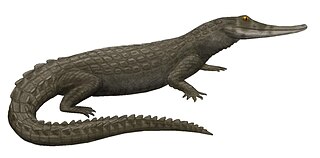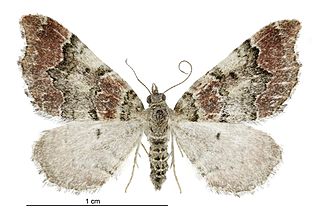Related Research Articles

Dendrobium is a genus of mostly epiphytic and lithophytic orchids in the family Orchidaceae. It is a very large genus, containing more than 1,800 species that are found in diverse habitats throughout much of south, east and southeast Asia, including China, Japan, India, the Philippines, Indonesia, Australia, New Guinea, Vietnam and many of the islands of the Pacific. Orchids in this genus have roots that creep over the surface of trees or rocks, rarely having their roots in soil. Up to six leaves develop in a tuft at the tip of a shoot and from one to a large number of flowers are arranged along an unbranched flowering stem. Several attempts have been made to separate Dendrobium into smaller genera, but most have not been accepted by the World Checklist of Selected Plant Families.

Edward Pierson RamsayFRSE FLS LLD was an Australian zoologist who specialised in ornithology.

Grevillea, commonly known as spider flowers, is a genus of about 360 species of evergreen flowering plants in the family Proteaceae. Plants in the genus Grevillea are shrubs, rarely trees, with the leaves arranged alternately along the branches, the flowers zygomorphic, arranged in racemes at the ends of branchlets, and the fruit a follicle that splits down one side only, releasing one or two seeds.

Syzygium is a genus of flowering plants that belongs to the myrtle family, Myrtaceae. The genus comprises about 1200 species, and has a native range that extends from Africa and Madagascar through southern Asia east through the Pacific. Its highest levels of diversity occur from Malaysia to northeastern Australia, where many species are very poorly known and many more have not been described taxonomically. One indication of this diversity is in leaf size, ranging from as little as a half inch to as great as 4 ft 11 inches by sixteen inches in Syzygium acre of New Caledonia.

Antimima is a succulent plant genus in the family Aizoaceae, indigenous to South Africa and Namibia.
Araeomorpha is a genus of moths of the family Crambidae.

Isisfordia is an extinct genus of crocodyliform closely related to crocodilians that lived in Australia during the Middle Cretaceous (Albian–Cenomanian).

Labdia is a genus of moths in the family Cosmopterigidae.

The Helosciomyzidae are a small family of flies found exclusively in the Southern Hemisphere. With the exception of the South American genus Sciogriphoneura, helosciomyzids occur only in Australia and New Zealand.
Cryptoblabes alphitias is a species of snout moth in the genus Cryptoblabes. It was described by Alfred Jefferis Turner in 1913. It is found in Australia. The holotype (female) was collected in Kuranda, Queensland.

Xyloryctidae is a family of moths contained within the superfamily Gelechioidea described by Edward Meyrick in 1890. Most genera are found in the Indo-Australian region. While many of these moths are tiny, some members of the family grow to a wingspan of up to 66 mm, making them giants among the micromoths.
Mecistophylla asthenitis is a species of Snout Moth in the genus Mecistophylla. It was described by Turner in 1904, and is known from Queensland, Australia.

Pedois is a genus of moths of the family Depressariidae.
Idioglossa metallochrysa is a very small species of golden-metallic coloured moth of the family Batrachedridae living in a subtropical highland climate, at least in Australia, and of which the caterpillars feed on the plant Cheilocostus speciosus, at least in Indonesia.
Apicystis is a genus of parasitic alveolates of the phylum Apicomplexa.

Thomas Harvey Johnston was an Australian biologist and parasitologist. He championed the efforts to eradicate the invasive prickly pear.
James Stirton was a Scottish physician and one of Scotland's leading experts on cryptogamic botany. His investigations in bryology and lichenology earned him a world-wide reputation.

Helastia cryptica is a moth of the family Geometridae. It was first described by Robin C. Craw in 1987. This species is endemic to New Zealand and is found from mid Canterbury south. This preferred habitat of H. cryptica is native forest and scrub at altitudes ranging from lowland to subalpine. It has also been observed in human modified habitat. The larvae of this species has been observed on Melicytus alpinus, likely feeding on perched dead leaves and have been hypothesised as feeding on epiphytic mosses. Adults are nocturnal and are on the wing from November until January. Externally this species is indistinguishable from its close relative H. cymozeucta. However the distribution of these two species can assist in the correct identification of specimens.
References
- ↑ Royal Society of Queensland; Queensland, Royal Society of (1917). The Proceedings of the Royal Society of Queensland. Vol. 29. Brisbane: Royal Society of Queensland.
- 1 2 "Antimima Turner, 1917". www.gbif.org. Retrieved 2021-09-11.